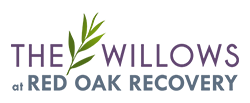Relapse is sometimes a part of the recovery process from drug and alcohol addiction. However, the goal of any treatment center is to prevent that from occurring. One way to do that is to create a comprehensive and customized relapse prevention therapy plan for each person in treatment. The use of relapse prevention strategies like this makes sense. It creates an opportunity to know what to do if relapse is a risk and provides the best layers of protection to avoid that outcome. At The Willows at Red Oak Recovery®, we incorporate this type of support into our treatment plans. To learn more about a relapse prevention plan, please reach out to our team today at 828.518.6941.
What Is a Relapse Prevention Plan?
This term is a detailed plan for how to prevent relapse. This tool can help you move through the most challenging times of recovery with confidence. This plan provides a strategy for acknowledging certain feelings and then avoiding adverse outcomes. It helps a person to recognize when their own behaviors may point to a relapse risk at some point in the near future.
What Goes into Substance Abuse Relapse Prevention Planning?
This process is highly personal but one most people work through with their counselor and therapist. It’s a good idea to have a written plan on the steps to take should relapse become something you are thinking about or at risk.
If you wish to know how to prevent relapse, here are several things that are part of any effective relapse prevention plan:
- Assessment of the previous history with drugs and alcohol – In this step, the goal is to understand when you were most likely to use drugs and who you were with during that time. It may also look at patterns that make you more likely to use.
- Acknowledge signs that may point to relapse – Your therapist can help you to understand the signs of relapse, including the way you may think, feel, or behave should this risk grow.
- Create an action plan – This is a more specific component of your prevention plan. It specifically outlines what you will do if you are at risk of using, such as getting into a support meeting or calling a specific person.
- A list of triggers is created – This list will point to anything that puts you at risk for use, such as things that remind you of previous use, people you were with, holidays, or anniversaries.
- Manage cravings through specific actions – This may include confronting such cravings and recognizing when they are happening, then getting help from them.
There are other components to a relapse prevention plan as well. For example, you and your counselor will create a list of things to do to help prevent relapse by keeping yourself healthy and active. You may also create a list of local support groups and meetings to attend to avoid relapse onset.
The Role of Professional Support and Guidance
Relapse prevention for women is a big part of the healing and recovery process. During your time in a treatment center, you’ll work on the physical and mental health aspects of recovery as well as creating a specific strategy for avoiding drug and alcohol use. It is through this type of plan that you’ll gain the confidence to move forward.
Some of the therapies that The Willows at Red Oak offers include:
Cognitive-Behavioral Therapy
This evidence-based therapy focuses on identifying and changing negative thought patterns and behaviors that may lead to or sustain addiction. By understanding the connection between thoughts, feelings, and actions, clients can develop healthier coping mechanisms to support long-term recovery and prevent relapse.
Trauma Therapy Program
Specifically designed to address and heal the emotional wounds caused by past traumas, this program helps clients process difficult experiences that may contribute to addiction. Through a supportive environment, individuals can gain tools to manage triggers and reduce the impact of traumatic memories on their recovery journey.
Experiential Therapy Program
This hands-on therapeutic approach uses creative and interactive activities such as art, music, role-playing, or outdoor experiences to explore emotions and past experiences. Experiential therapy helps clients process feelings on a deeper level, allowing them to gain new perspectives and build emotional resilience.
Psychotherapy Program
Traditional talk therapy focuses on improving mental health by addressing the underlying psychological issues that often contribute to addiction. With the guidance of a licensed therapist, clients work through challenges such as anxiety, depression, or unresolved conflicts, gaining insights and strategies for healthier living.
Nutritional Therapy Program
A holistic approach that highlights the connection between proper nutrition and emotional, physical, and mental healing. By creating individualized meal plans and educating clients about the role of diet in recovery, this program supports the body’s ability to rebuild and thrive throughout the recovery process.
Get the Help You Need Today from The Willows at Red Oak
Having a relapse prevention plan is a reliable way to make sure your addiction recovery goes as well as possible. Our team at The Willows at Red Oak offers tools and strategies to help you plan to be drug-free for the rest of your life. To learn more, call 828.518.6941 or use our convenient online contact form today for more insight.

